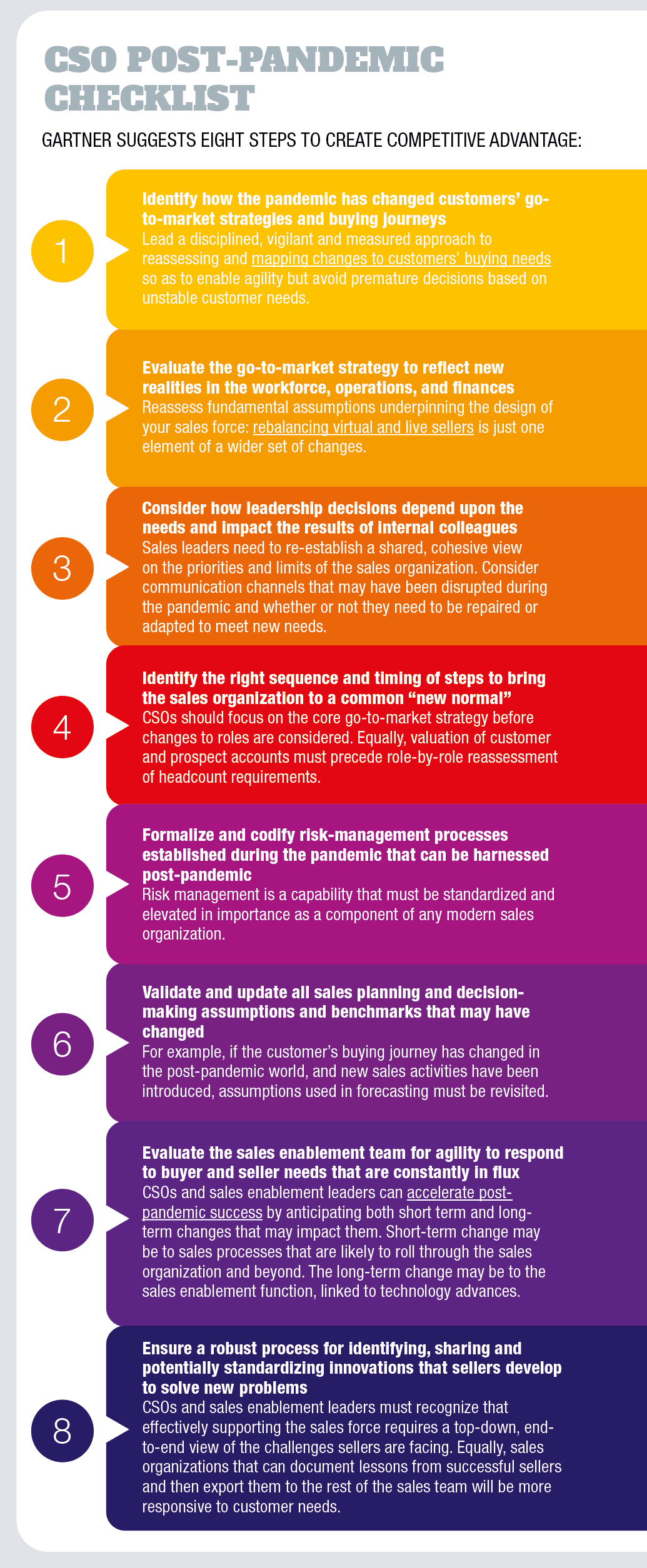CSO post-Pandemic checklist
GARTNER SUGGESTS EIGHT STEPS TO CREATE COMPETITIVE ADVANTAGE:
1
Identify how the pandemic has changed customers’ go-to-market strategies and buying journeys
Lead a disciplined, vigilant and measured approach to reassessing and mapping changes to customers’ buying needs so as to enable agility but avoid premature decisions based on unstable customer needs.
2
Evaluate the go-to-market strategy to reflect new realities in the workforce, operations, and finances
Reassess fundamental assumptions underpinning the design of your sales force: rebalancing virtual and live sellers is just one element of a wider set of changes.
3
Consider how leadership decisions depend upon the needs and impact the results of internal colleagues
Sales leaders need to re-establish a shared, cohesive view on the priorities and limits of the sales organization. Consider communication channels that may have been disrupted during the pandemic and whether or not they need to be repaired or adapted to meet new needs.
4
Identify the right sequence and timing of steps to bring the sales organization to a common “new normal”
CSOs should focus on the core go-to-market strategy before changes to roles are considered. Equally, valuation of customer and prospect accounts must precede role-by-role reassessment of headcount requirements.
5
Formalize and codify risk-management processes established during the pandemic that can be harnessed post-pandemic
Risk management is a capability that must be standardized and elevated in importance as a component of any modern sales organization.
6
Validate and update all sales planning and decision-making assumptions and benchmarks that may have changed
For example, if the customer’s buying journey has changed in the post-pandemic world, and new sales activities have been introduced, assumptions used in forecasting must be revisited.
7
Evaluate the sales enablement team for agility to respond to buyer and seller needs that are constantly in flux
CSOs and sales enablement leaders can accelerate post-pandemic success by anticipating both short term and long-term changes that may impact them. Short-term change may be to sales processes that are likely to roll through the sales organization and beyond. The long-term change may be to the sales enablement function, linked to technology advances.
8
Ensure a robust process for identifying, sharing and potentially standardizing innovations that sellers develop to solve new problems
CSOs and sales enablement leaders must recognize that effectively supporting the sales force requires a top-down, end-to-end view of the challenges sellers are facing. Equally, sales organizations that can document lessons from successful sellers and then export them to the rest of the sales team will be more responsive to customer needs.


